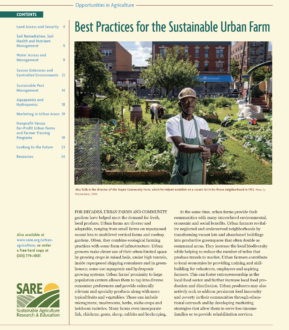Farming on urban soils comes with a somewhat different set of challenges compared to farming on cropland. In many urban situations, soils start off in poor condition due to the land’s history. The soil in urban areas tends to be heavily compacted, with low organic matter or topsoil, and it often contains chemical contaminants or construction debris like concrete, asphalt and garbage.
Heavy metal contaminants, such as copper, arsenic and lead, are a main concern for urban growers. These and other contaminants remain in the soil for long periods of time in bioavailable forms, meaning they can be absorbed by humans. Contaminants may cause chronic health effects when ingested, often by inhaling contaminated soil dust or by consuming soil particles that remain on produce. Although chemical contamination is concerning, practical and effective solutions to reduce its negative impacts exist. If you’re considering an urban farming operation, research the land-use history and work with local commercial labs, conservation districts, USDA or Cooperative Extension to determine the contaminants your soil should be analyzed for and how to control them. This investigation should be done in addition to standard testing for nutrient levels, pH and organic matter.
Soil Contamination
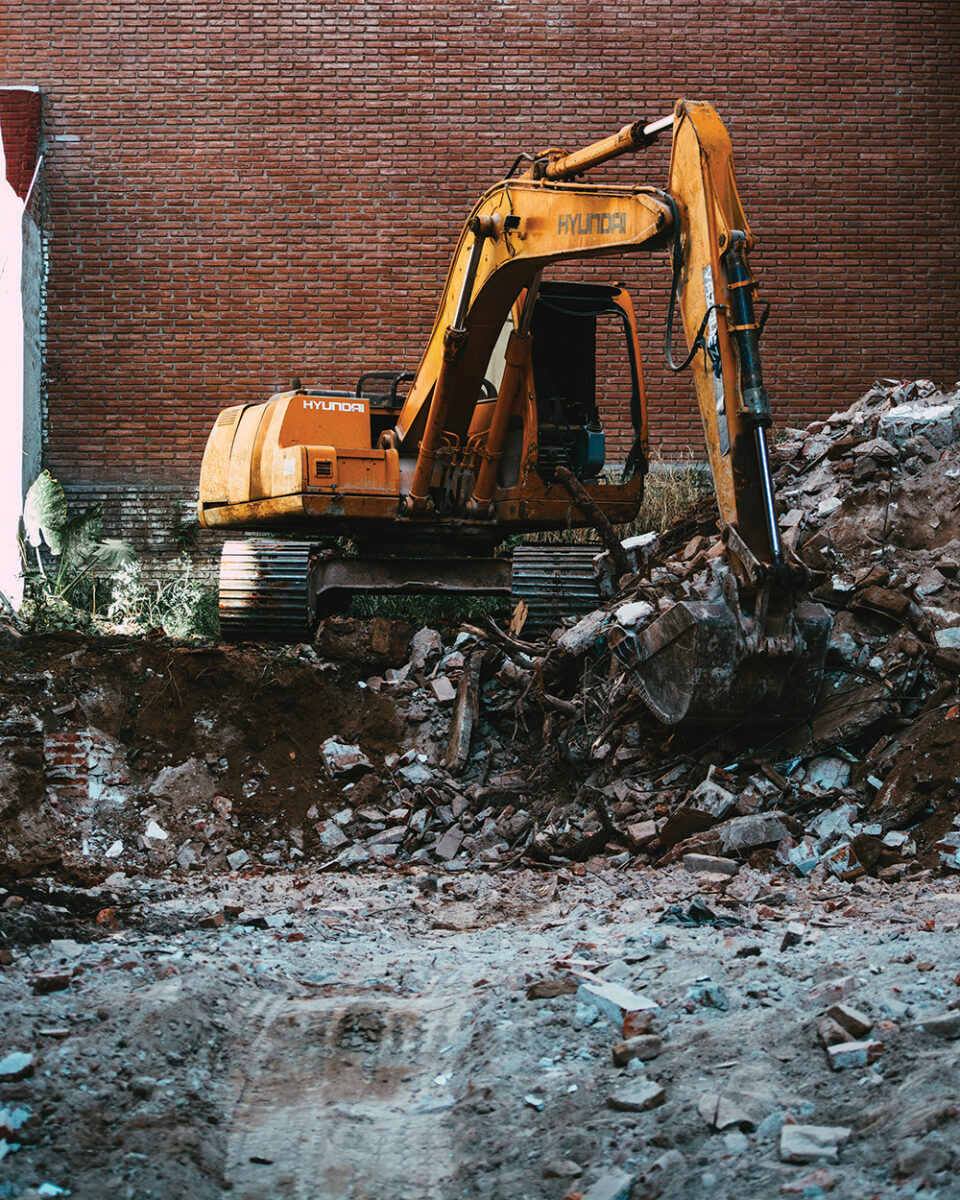
Photo by Francisco Andreotti
If you’re considering a site where soil contamination is a concern, consult with environmental specialists to identify a mitigation strategy that will be effective for the types and levels of toxic compounds that are present. A variety of remediation practices exist to reduce or remove contaminants from polluted soil. These practices work best at sites with fairly low levels of soil pollution. For heavily contaminated sites, remediation is impractical, expensive and requires long-term management to be effective. Removing contaminated soil and replacing it with clean soil is also expensive, but it may be an option for sites that receive some form of public funding.
Otherwise, a more practical option is to use raised beds filled with clean soil. For sites with low contamination levels, one of the best ways to build soil health and reduce the bioavailability of soil contaminants such as heavy metals is through the addition of composts and mulches. Organic matter binds to contaminants, diluting their presence in the soil and reducing the potential for human exposure. Use the right soil amendments to maintain neutral soil pH, and use optimal nutrient levels to reduce heavy metal bioavailability. Maintaining a soil pH between 5.8 and 7 is ideal for most vegetable crops and helps to minimize the amount of soil contaminants that plants take up.
Practical safety steps you should also take on a regular basis:
- Follow best practices around produce handling and personal hygiene.
- Thoroughly wash produce before storing or eating it to wash off traces of surface soil contamination.
- Peel away the outer layers of leafy vegetables to reduce the risk of surface contamination.
- Practice good habits such as using gloves and washing your hands thoroughly after handling soil.
Certain crop production and landscaping strategies can help too:
- Avoid growing food crops like rice or sunflowers that are known to be prone to taking up contaminants.
- Use mulches in growing areas to minimize the movement of soil onto the edible parts of crops.
- Use mulches on bare walkways, or cover them with stone or perennial ground covers.
- If certain areas of your site have particularly high levels of toxic compounds, consider using them for landscaping or buildings instead of for growing food.
Extend these safety protocols to your employees and to members of the community who might visit for activities like tours, classes or workshops. Pay particular attention to children, who are more at risk of consuming soil through their play and by eating unwashed produce.
For more information about soil remediation and safe gardening practices around contaminated soils, visit the Environmental Protection Agency’s Brownfields Program. It provides technical assistance and funding to clean up and reuse contaminated sites.
Soil Health on Urban Farms
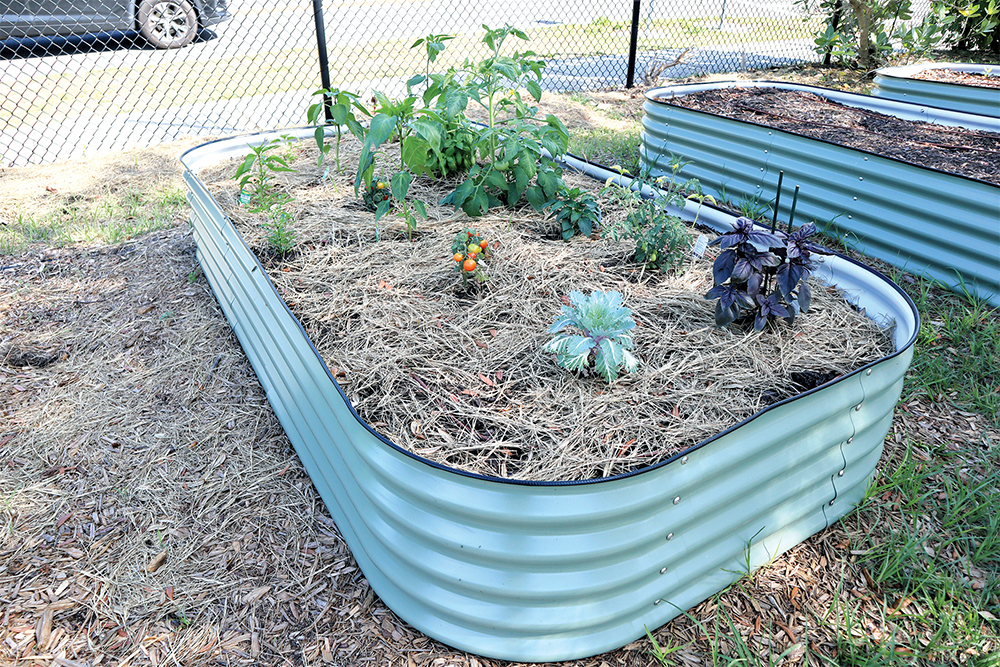
way to reduce the risk posed by toxins in urban soils. Photo by Lauren Moore, USDA
Aside from the risks of soil contamination and poor soil quality at the outset, managing urban soil on an ongoing basis has additional challenges. While it’s common to allow cropland to rest and rebuild organic matter through practices such as fallowing or rotating into pasture, urban farmers typically can’t afford to rest their soils through a growing season. This is because they’re usually operating on much smaller plots that need to be under continuous production for the farm to break even.
Urban producers rely on adding organic matter through composts, yard wastes and leaf litter in order to maintain healthy soil tilth and nutrient levels. Work with your community to source low-cost organic materials you can use to make your own compost. Local businesses like restaurants, grocery stores and breweries can be good sources of food waste. Municipal yard waste collection agencies, power companies and arborists may also have a source of mulch or organic matter to cover and feed your soil. Many urban producers invest in a vermicomposting system, where worms are used to speed up the breakdown of organic materials in compost piles. North Carolina State University Extension provides resources on vermicomposting.
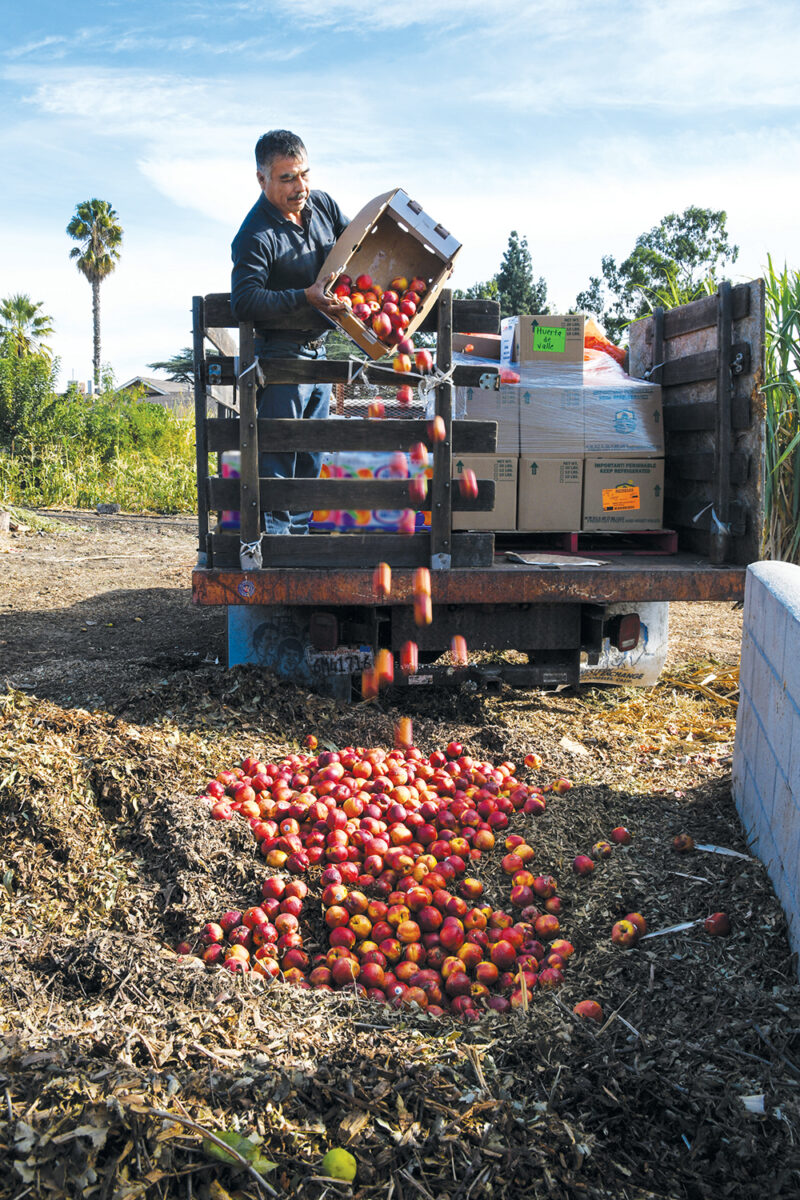
The farm collects this source of organic matter from an area food distributor. Photo by Lance Cheung, USDA
The best practices for maintaining soil health and tilth on an urban farm are otherwise similar to farms in general:
- Use soil tests to match key soil nutrients (nitrogen, phosphorus and potassium) to the needs of your crops.
- Provide ample organic matter inputs to feed your soil.
- Incorporate cover crops like nitrogen-fixing legumes or nitrogen-scavenging species like oats and rye.
- Rotate crops in your planting areas to reduce the likelihood of pathogens building up.
- Minimize soil disturbance by practicing no-till or conservation tillage.
Like compost, cover crops are one of the most important soil health tools for urban farmers. They can be planted into beds during the off season to build organic matter and add nitrogen to the soil, as well as to help with weed control.
When it comes to tillage and bed preparation, smaller, in-ground lots can be worked with walk-behind cultivators and tillers. Although it’s labor intensive, many urban producers rely on tried-and-true manual tools to prepare beds, manage weeds and aerate the soil. Examples of these include broadforks, rakes and many types of hoes, including paddle hoes, wheel hoes and stirrup hoes. ATTRA provides a resource, Equipment and Tools for Small-Scale Intensive Crop Production, which discusses tools for small-scale production. SARE offers a Manage Weeds on Your Farm book as well as a video series on organic weed management. One video features urban farmers Shakera and Juan Raygoza demonstrating the equipment they use on their farm. For further information on soil health, explore SARE’s Building Soils for Better Crops, which includes a chapter on soil management strategies for urban farms. Managing Cover Crops Profitably provides an in-depth understanding of cover crops and profiles on dozens of cover crop species.
Profile: VINES (Volunteers Improving Neighborhood Environments)
New York
FNE19-942: Healthy Soil for Urban Farm Production: Building from Scratch
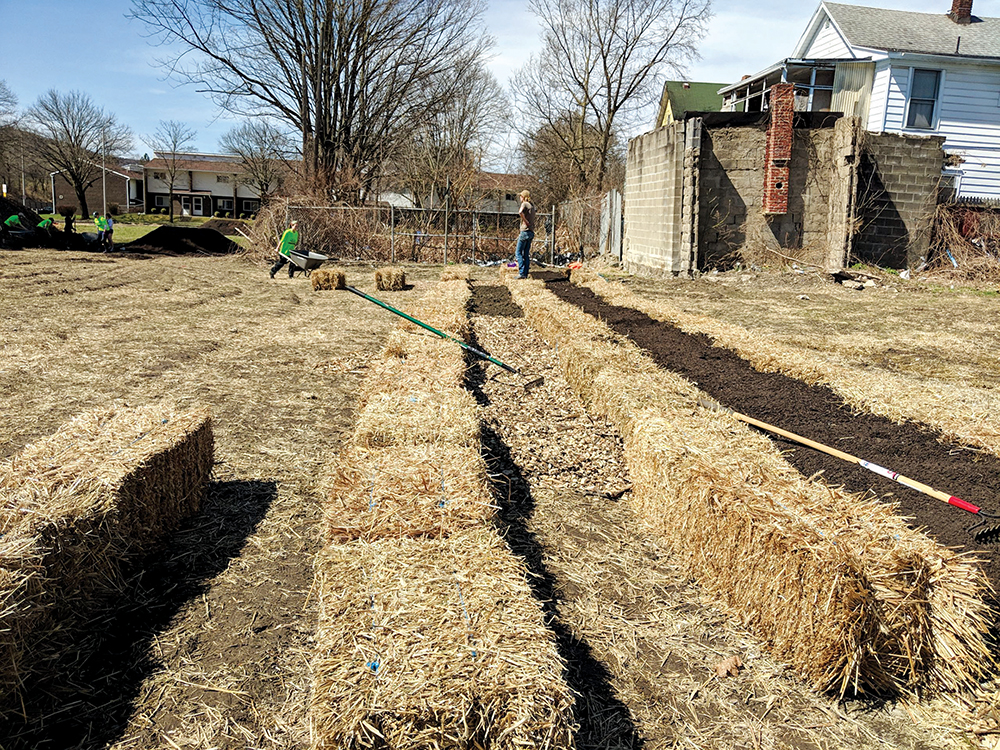
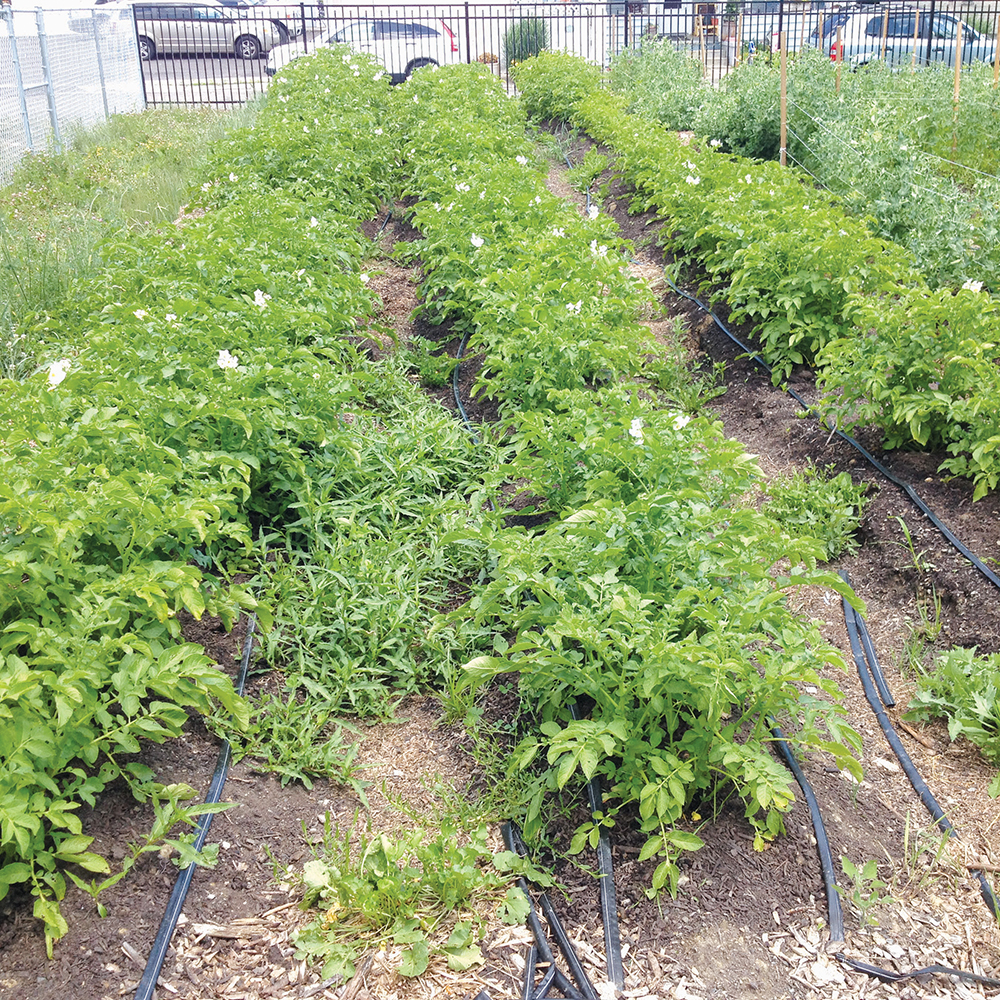
In south-central New York, staff and volunteers at Binghamton Urban Farm work together to grow more than 7,000 pounds of fresh fruit and vegetables each year that are sold or donated to their community. At the same time, the farm serves as a classroom where people of all ages can learn about nutrition, agriculture and environmental stewardship. The goal of Binghamton Urban Farm, a project of the nonprofit Volunteers Improving Neighborhood Environments (VINES), is to bring together multicultural communities to grow healthy foods, beautify their neighborhoods and contribute to a more just community food system.
Binghamton Urban Farm started out on a half-acre lot in 2010 and benefited from an excellent growth opportunity in 2018. That year, 12 adjacent properties became available after they entered the Federal Emergency Management Agency’s (FEMA) flood buyout program. Because these properties were flood prone and no longer suitable for structures, the city of Binghamton agreed to lease them to VINES for the expansion of the Binghamton Urban Farm. Since this new land was previously residential, Kyle Rittenburg, the farm manager at the time, was concerned with toxic contaminants and poor overall quality of the soil. Importing organic matter to build the soil and create a buffer from toxic contaminants was cost prohibitive, so farm staff sought different styles of raised beds that were affordable, compatible with current farm management and could produce crops at a commercial scale.
With support from a Northeast SARE grant, the farm compared two different strategies to build soil in the raised beds: a typical topsoil bed compared to a straw-bale-style bed. The approach in the typical raised bed was to use a 4-inch layer of topsoil with a 2-inch layer of compost over the topsoil. The straw bale raised beds were made by lining hay bales end to end and backfilling with a 6–8-inch layer of wood chips, a 2–3-inch layer of topsoil and a 2–3-inch layer of compost. Wood chips are often free and can help improve drainage and add organic matter. Over time, the straw bale structure and wood chips decompose and integrate into healthy, productive soil.
To test the productivity of these two styles of beds, the team at Binghamton Urban Farm compared the marketable yield of cucumbers and lettuce grown in each. Straw bale beds produced more than twice as many cucumbers as the topsoil beds but relatively equal yields of leaf lettuce. Although initial costs and labor were higher due to the cost of the straw bales, they reported benefits like improved soil drainage, which is especially important in the flood-prone area wherein they operate. Farm staff and volunteers also found that the straw beds were comfortable to kneel and work on. Others, however, found the footing to be unstable at first. This was no longer a problem after the beds settled in the second year.
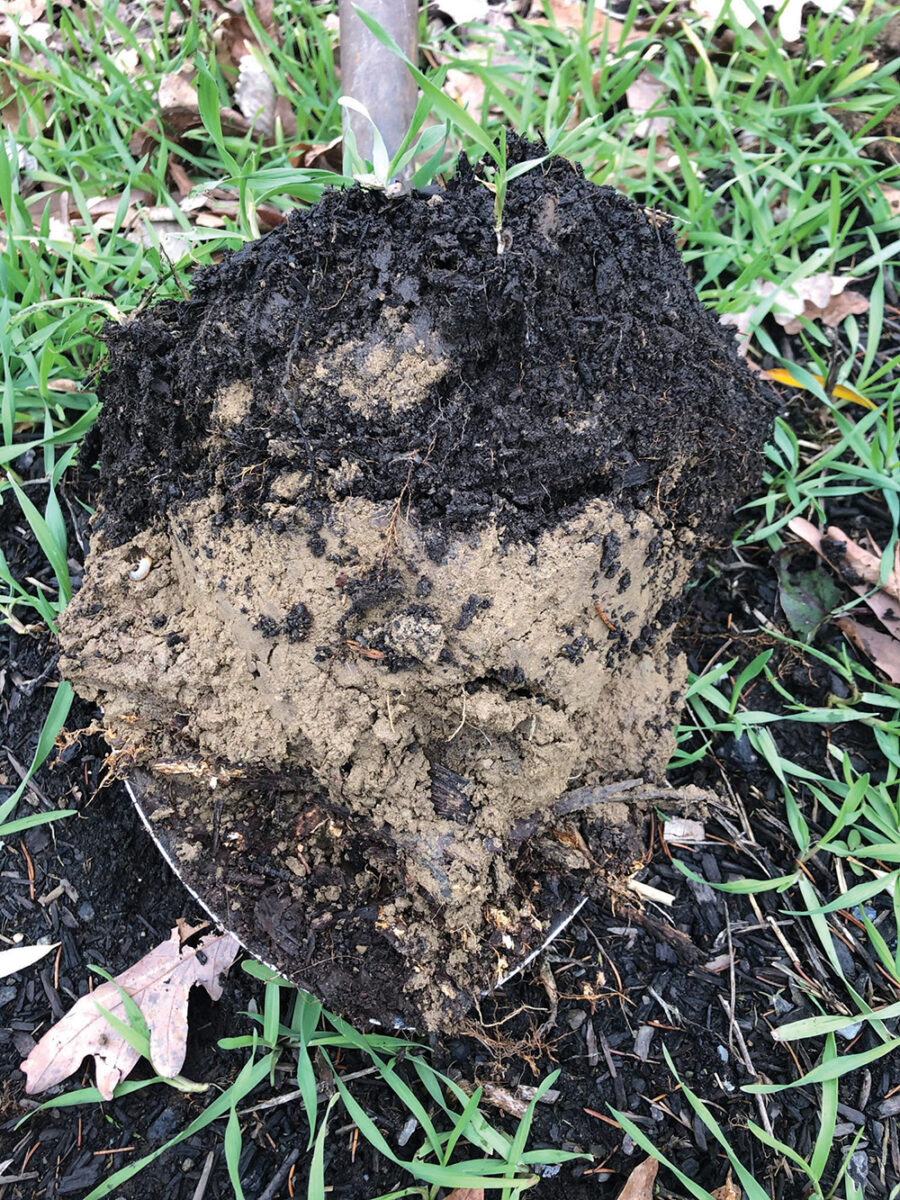
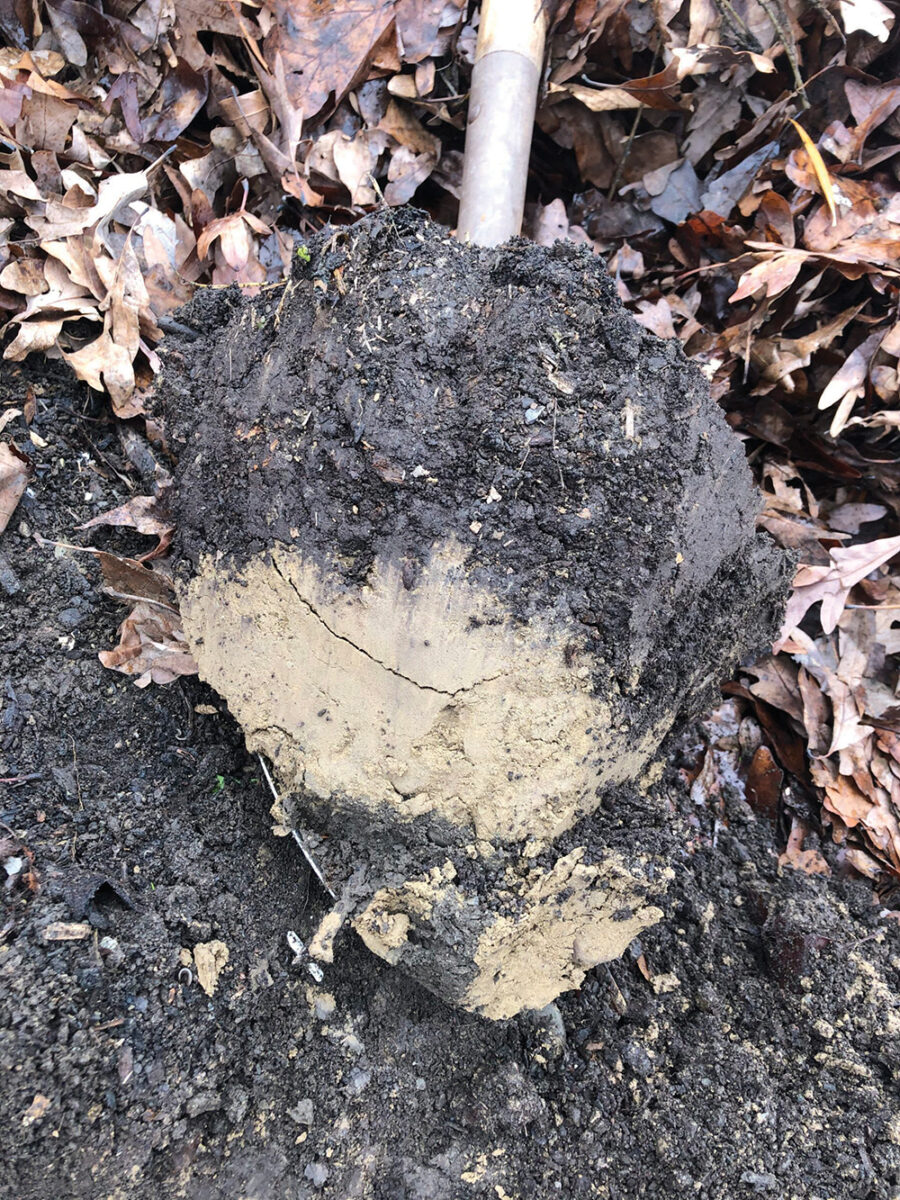
While there are some tradeoffs to the straw bale beds, the long-term benefits from added organic matter and deeper soils may be worthwhile. “After comparing the two different methods for building new beds, we’ve decided for new beds to add 8 inches of wood chips before layering on soil and compost,” says Executive Director Amelia LoDolce. This adjusted bed design allows for good drainage on sites that tend to be compacted while also saving labor and costs for the straw bale design.
In addition to operating the Binghamton Urban Farm, VINES maintains a strong presence in their community by running community garden and youth education programs. They strive to keep their produce affordable and accessible to their community. For example, they offer microshares in their community supported agriculture (CSA) program for families that may not be able to afford a full share, as well as discount shares for folks who volunteer on the farm. Their recent expansion has also allowed them to expand their youth education program, Grow Binghamton, which hires teenagers and young adults to participate in food production in the spring, summer and fall.
